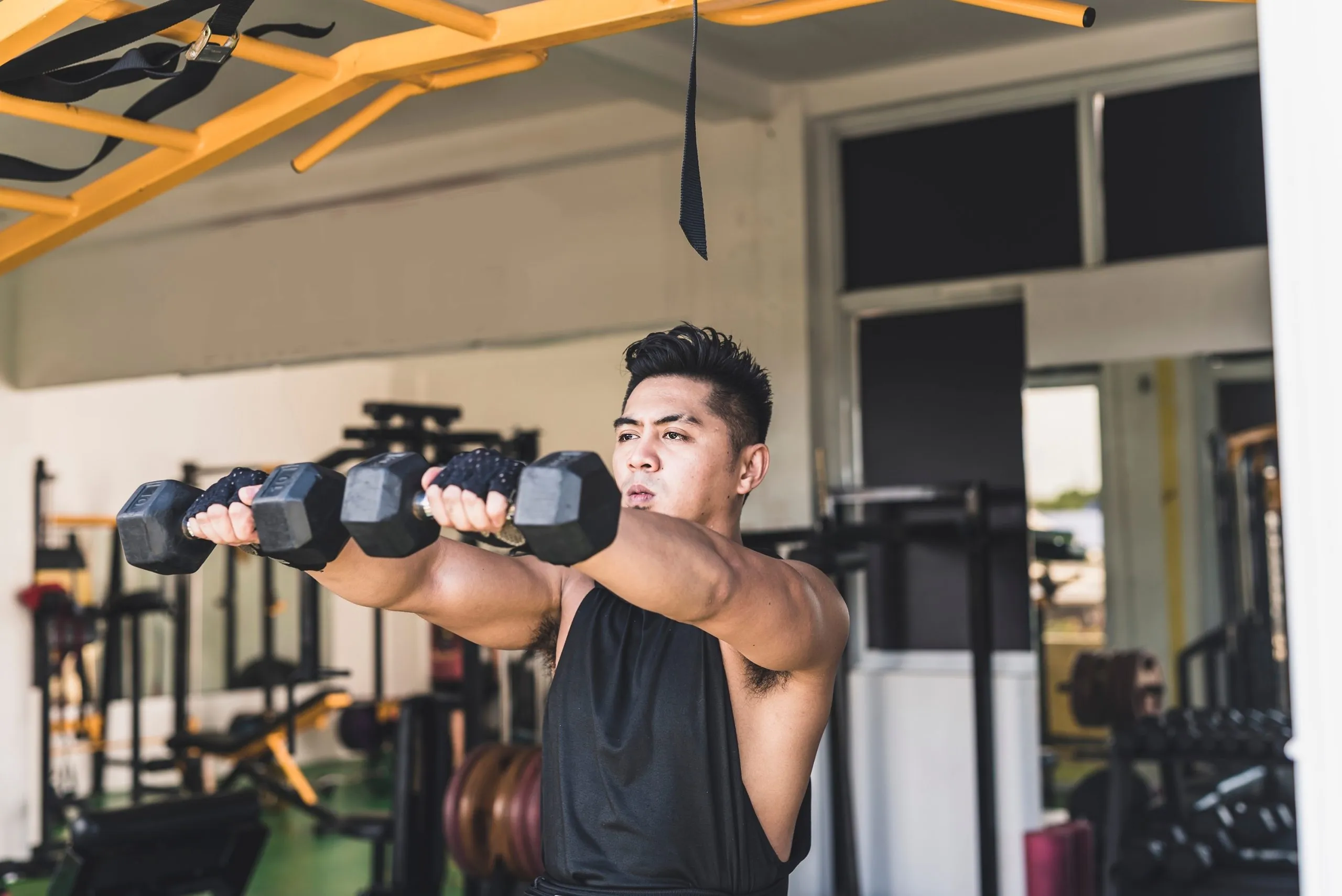Fixing Front Delt Overtraining: Balancing the Shoulders
Ask almost any lifter what hurts after a heavy week of pressing, and chances are the answer is front delts.
The anterior deltoids take the brunt of the work in bench presses, incline presses, overhead presses, and push-ups. Over time, that constant demand can lead to overtraining, imbalances, nagging shoulder pain, and a rounded posture.
This guide breaks down the signs of front delt overtraining, why it happens, and—most importantly—how to fix it so your shoulders stay strong, balanced, and injury-free.
Why Front Delts Are So Prone to Overtraining
The anterior delts sit at the front of the shoulder joint and are activated in nearly every pressing motion.
Unlike side or rear delts, which often require deliberate targeting, the front delts get hit indirectly and directly multiple times per week in most bodybuilding programs.

Main reasons for overtraining include:
- Too much pressing volume (bench + incline + OHP + dips in the same week).
- Lack of rear delt and upper back work.
- Poor recovery between sessions.
- Constant isolation raises stacked on top of compound lifts.
Signs of Front Delt Overtraining
- Nagging shoulder pain – especially at the front joint during presses.
- Loss of pressing strength – chest and shoulder lifts stall despite effort.
- Rounded shoulders – poor posture from tight anterior delts overpowering the back.
- Weak side/rear delts – lateral and posterior deltoids lag behind in development.
- Mental burnout – shoulders feel “fried” even at the start of training.
The Dangers of Ignoring It
Overtraining isn’t just about slow gains—it can lead to:
- Impingement syndrome from compressed tendons in the shoulder.
- Pectoral strain due to imbalance between chest and delts.
- Plateaued physique where the chest never looks full because front delts dominate.
For a bodybuilder chasing symmetry, that’s a major red flag.
Step 1: Assess Your Current Training Split
Most overtraining problems show up when you don’t realize how much indirect volume your front delts are already getting.
Typical overlap looks like this:
- Chest day: Flat bench, incline dumbbell, dips → heavy anterior delt recruitment.
- Shoulder day: Overhead press, Arnold press → direct anterior delt work.
- Extra: Isolation raises added on top.
👉 That’s 4–6 presses per week, PLUS front raises—no wonder the delts are cooked.
Step 2: Balance with Side and Rear Delts
For healthy, aesthetic shoulders, the ratio of front-to-side-to-rear delt training should be close to even. Most lifters are front-delt dominant—their rear delts and side delts are lagging.
Fix:
- For every front delt exercise, add 1–2 rear delt moves (face pulls, rear delt fly, reverse pec deck).
- Double down on lateral raises for side delts.
- Think push vs pull balance: match pressing volume with pulling volume (rows, pull-ups, face pulls).
Step 3: Cut Back on Isolation (Smart Programming)
If you’re overtrained, isolation work should be strategic, not mindless.
Bad approach:
- Chest day: 4 presses + front raises
- Shoulder day: OHP + Arnold press + front raises again
Better approach:
- Chest day: Bench, incline press, flyes (NO front raises)
- Shoulder day: Overhead press + lateral raises + rear delt fly (skip front raises unless delts are truly lagging)
👉 Only use front raises if your delts are behind—not just for the sake of adding more volume.
Step 4: Train Smarter, Not Harder
Deload Your Front Delts
Take 1–2 weeks where you remove all direct front delt isolation. Focus on rear and side delts, plus pressing strength maintenance.
Prioritize Pulls Over Presses
If posture or shoulder pain is an issue, increase row and face pull volume. These balance out the anterior dominance.
Improve Recovery
- Sleep: 7–9 hours
- Mobility work: Shoulder dislocates, band pull-aparts
- Stretch tight pecs and front delts to open the chest and restore posture
Step 5: Add Structural Balance Work
Face Pulls (High Volume)
- 3–4 sets of 12–20 reps
- Best movement to counteract anterior dominance
Lateral Raises (Side Delts)
- 3–4 sets of 12–15 reps
- Use slow tempo and holds at the top
Rear Delt Rows or Reverse Fly
- 3–4 sets of 10–12 reps
- Pull elbows out to bias rear delts
A Balanced Shoulder Routine (Anti-Overtraining Example)
- Overhead Press – 4×6 (front delts get hit here)
- Lateral Raise – 3×12–15
- Rear Delt Fly (Dumbbell or Machine) – 4×12
- Face Pulls – 3×15–20
- Optional Front Raise – ONLY if anterior delts lag, 2×12
👉 Notice how front raises are optional and rear/side delts dominate the accessory work.
Practical Takeaways
- Your front delts don’t need as much direct work as you think—they already get hammered.
- If your shoulders are rounded, sore, or imbalanced, pull back on pressing volume and isolation.
- Add more side/rear delt and upper back work to balance aesthetics and shoulder health.
- Smarter programming = stronger lifts, fewer injuries, and a balanced physique.
Conclusion
Front delt overtraining is one of the most common mistakes in bodybuilding. Pressing obsession leads to shoulder pain, lagging rear delts, and an unbalanced look.
The fix isn’t more work—it’s smarter work. By programming with balance in mind, cutting excess isolation, and doubling down on rear delt training, you’ll build bigger, healthier, and stronger shoulders that stand out for the right reasons.




